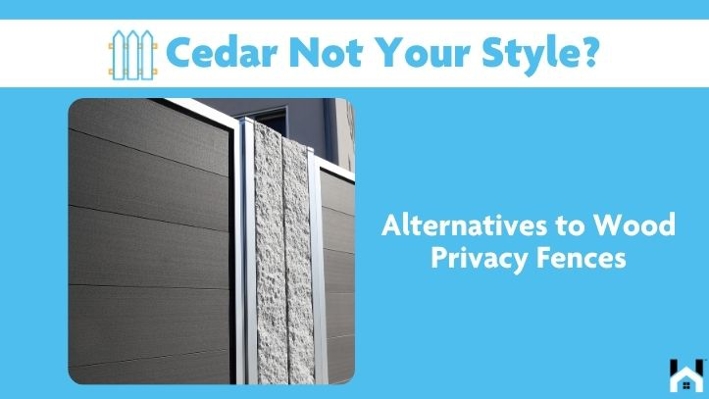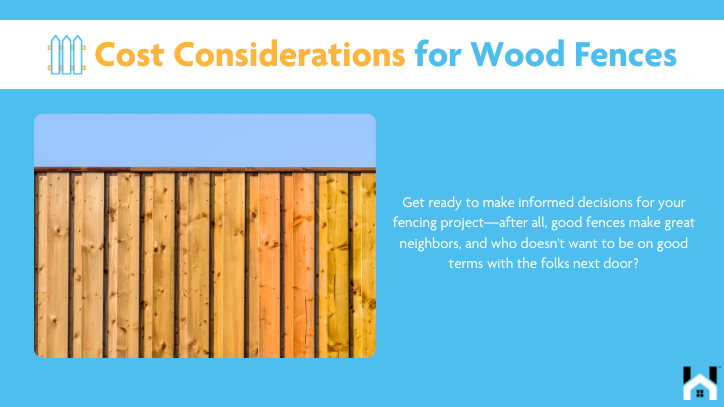
A wood privacy fence can serve as a delightful and practical enhancement to any property, offering an appealing blend of security and aesthetic charm.
However, one must consider that the cost of installation can vary dramatically due to a myriad of factors, including materials, size, and location—which can feel as unpredictable as a game of chance.
In this discussion, we will delve into the key elements that impact the price of wood privacy fences, along with savvy options for reducing costs without compromising on quality.
Maintenance considerations will also be addressed, ensuring that your investment remains as enduring as the finest oak.
Get ready to make informed decisions for your fencing project—after all, good fences make great neighbors, and who doesn't want to be on good terms with the folks next door?
What is a Wood Privacy Fence?
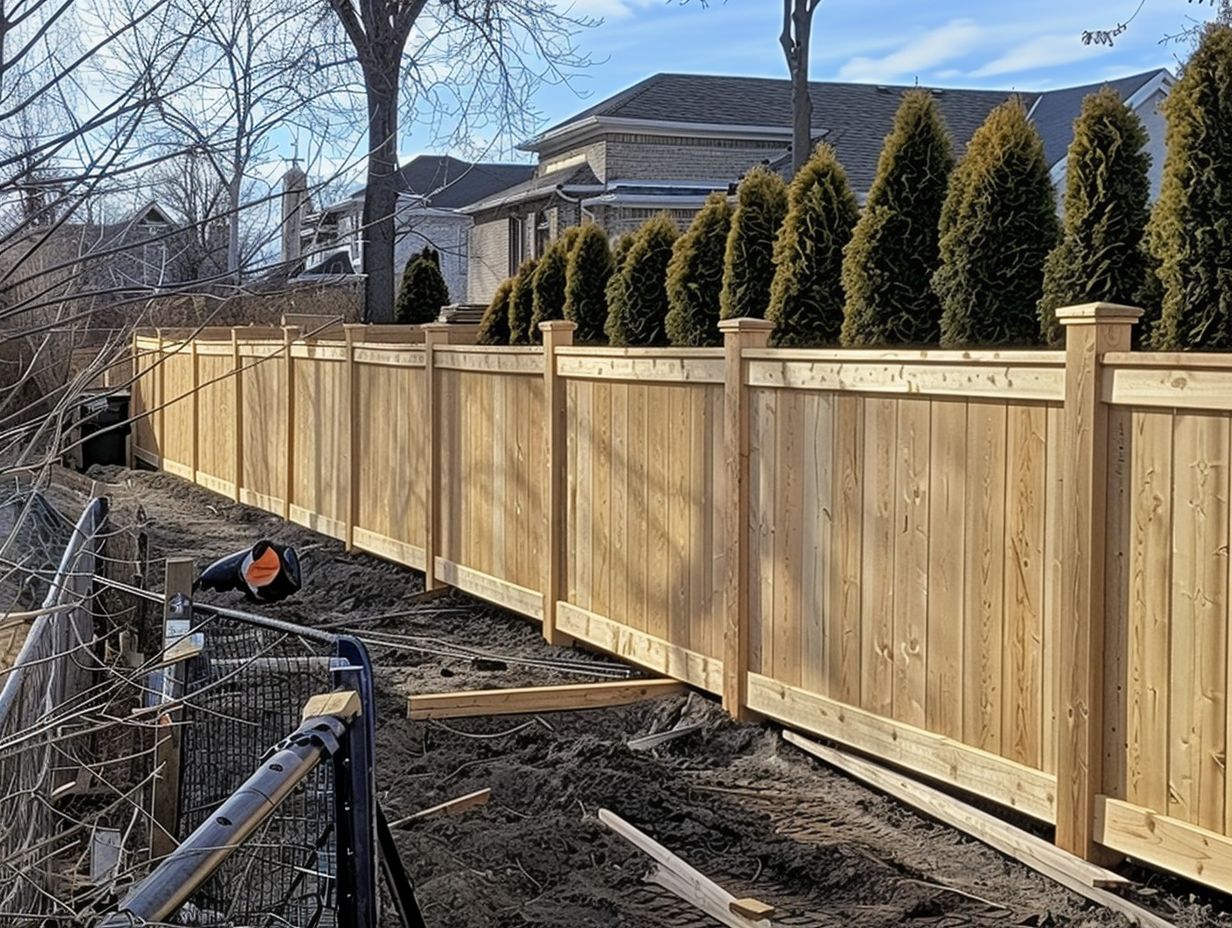
A wood privacy fence is an esteemed choice for homeowners aiming to elevate their outdoor living experience while simultaneously establishing a sanctuary of seclusion and security. These fences are expertly crafted to serve as visual barriers, effectively blocking prying eyes and unwelcome noise. This not only boosts property value but also adds a delightful touch of aesthetic charm, seamlessly complementing various landscape designs.
Available in an array of wood types such as cedar, pine, and redwood, each offers its own distinct durability and longevity against the whims of Mother Nature.
Cedar, for instance, is celebrated for its natural resistance to termites and decay, boasting a warm, rich hue that captivates many a discerning eye. Pine, on the other hand, is the wallet-friendly contender that can be treated to brave the elements without breaking the bank. And let us not forget about redwood, which, with its stunning appearance and extended lifespan, presents a premium choice that elevates the overall visual appeal of any property while standing resilient against even the harshest climates.
Homeowners would do well to consider maintenance factors, as treated wood may demand periodic staining or sealing. This ensures that the fence remains not only functional but also a striking enhancement to the property for years to come, proving that a little upkeep can go a long way in preserving one’s outdoor fortress.
Factors Affecting the Cost of Wood Privacy Fences
Grasping the intricacies that influence the cost of wood privacy fences is paramount for homeowners aiming to make a shrewd investment. Several factors—including installation expenses, material costs, local regulations, and labor fees—play crucial roles in shaping the financial landscape of this enduring investment.
Moreover, homeowners would do well to take into account maintenance costs and the ripple effects their fencing choices may have on budget planning. After all, selecting the right fencing option isn’t just about aesthetics; it’s about ensuring that one’s wallet remains as secure as the property itself.
Materials and Labor Costs
The materials and labor costs associated with wood privacy fences are pivotal elements that shape the budget for homeowners; opting for high-quality wood varieties, such as pressure-treated lumber or resilient composites, can substantially impact material expenses while ensuring that meticulous installation techniques contribute to enhanced longevity and visual charm.
Various wood types, like cedar and redwood, come with their own unique perks, including natural resistance to pests and decay, which can further affect maintenance demands down the road. While the initial investment for premium woods may induce a slight gasp, their durability often leads to considerable savings on replacement and repair costs in the future.
The expertise of skilled labor is critical in the installation process, as their know-how guarantees that the fence will withstand the trials of time. Investing in quality materials not only elevates the property's aesthetic appeal but also affords homeowners the sweet serenity of knowing their investment is well-guarded against the caprices of nature.
Size and Design of Fence
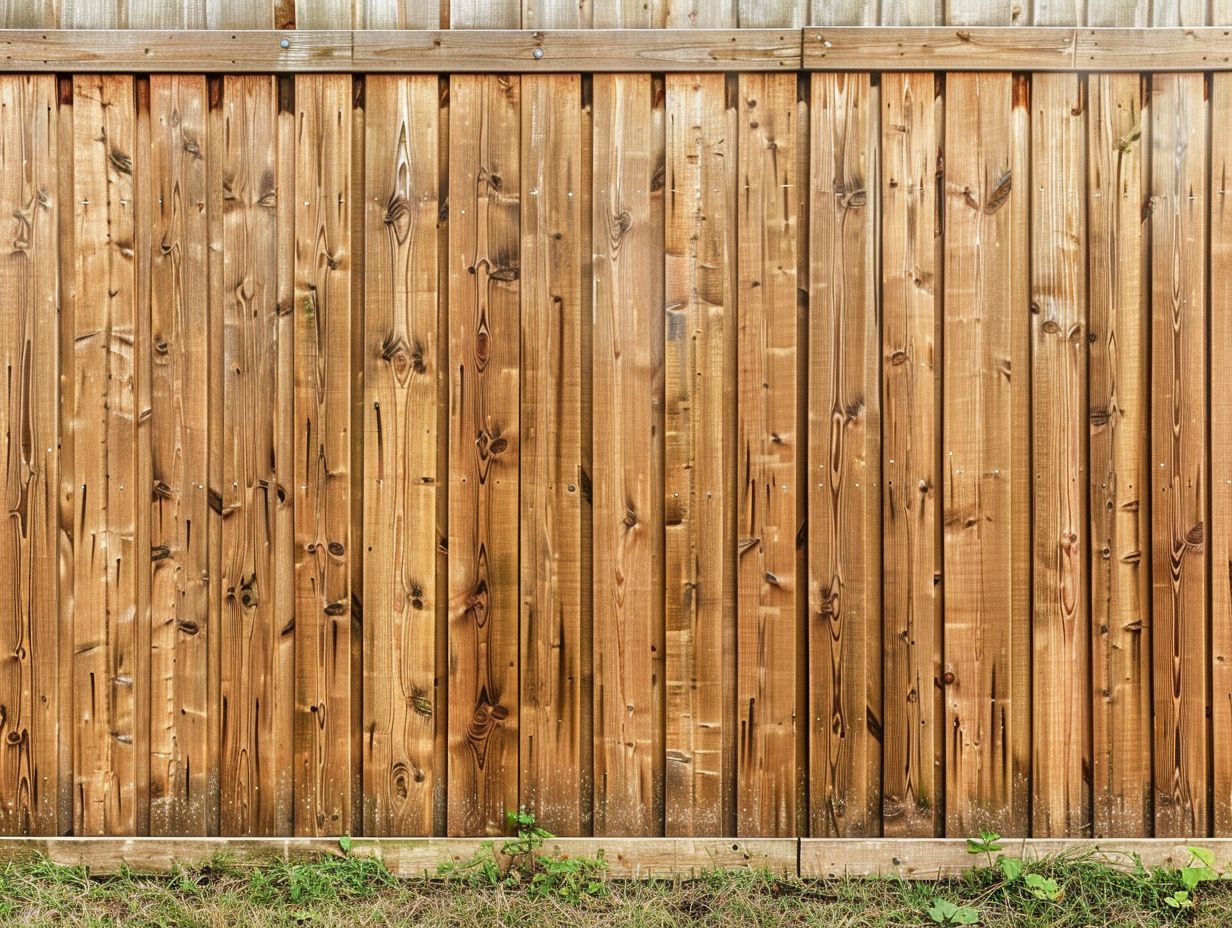
The dimensions and design of a wood privacy fence play a pivotal role in determining both its cost and functionality. Various factors, such as fence height and overall design, must align with local zoning laws while simultaneously catering to the essential need for effective visual barriers that preserve privacy and enrich outdoor living experiences.
Selecting the appropriate height is of paramount importance, as numerous municipalities impose restrictions to maintain the harmonious aesthetics of the neighborhood. Homeowners would do well to explore a variety of design styles, from the classic stockade to the trendy horizontal slats—each option presenting distinct benefits and costs.
For instance, while decorative top designs can enhance visual appeal, they might also lead to a slight uptick in expenses.
Moreover, it is vital to consider wind loads and the durability of materials, as these elements can have a significant impact on long-term maintenance while contributing to overall functionality. Ultimately, grasping these factors will assist homeowners in crafting a fence that not only adheres to local regulations but also perfectly aligns with their unique lifestyle aspirations.
Location and Accessibility
Location and accessibility may not be the stars of the fencing world, but they certainly play pivotal supporting roles that can dramatically sway the installation cost of wood privacy fences. Local regulations often waltz in, imposing constraints that dictate the design and height of the fence, while the regional climate can be quite the diva, influencing material choices and maintenance frequency.
Consider, for instance, areas that are no strangers to heavy rain or snow; these locales may demand specially treated wood or alternative materials to stave off the dreaded rot and warping, inevitably affecting both long-term durability and upkeep. Meanwhile, accessibility for workers cannot be underestimated, especially in densely populated urban settings where maneuvering heavy materials feels akin to participating in an Olympic obstacle course.
A firm grasp of local zoning laws is absolutely essential, as these guidelines dictate how close a fence can waltz to property lines, ensuring compliance and sidestepping potential neighborly disputes. Thus, every geographical nuance not only shapes the initial cost and planning of wood privacy fences but also influences their long-term viability across various settings.
Options for Reducing Costs
Homeowners have a veritable buffet of options for trimming costs when it comes to installing a wood privacy fence, allowing them to strike a delightful balance between quality and affordability. The decision to embark on a DIY journey or to enlist the expertise of a professional can significantly influence the final bill.
Additionally, venturing into the realm of alternative materials may reveal further savings, all without compromising on the fence's durability or aesthetic charm. After all, who says you can't have your fence and save money too?
DIY vs Hiring a Professional
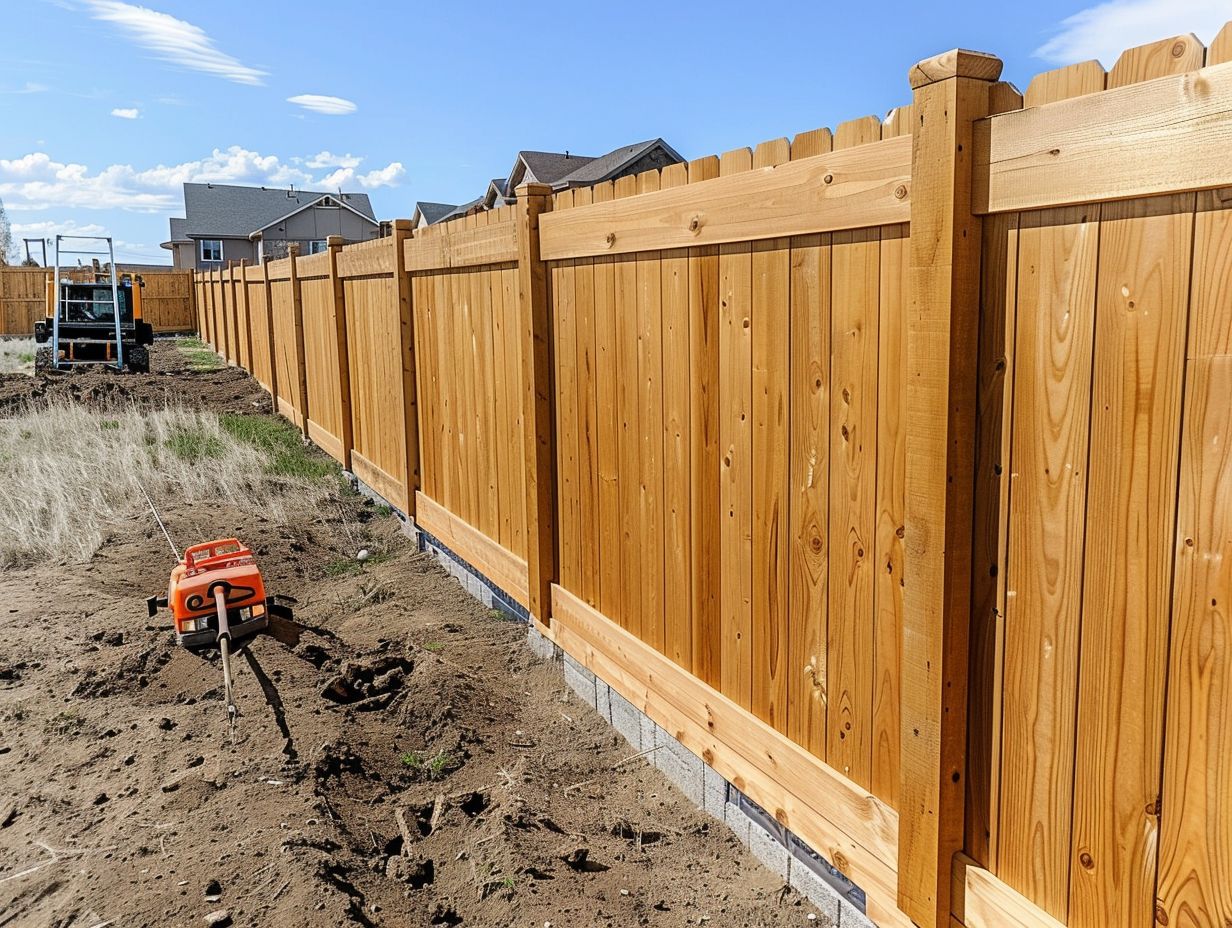
Regarding the age-old debate of DIY versus hiring a professional for wood privacy fence installation, homeowners find themselves in a delightful quandary. On one hand, engaging in the DIY route may save on labor costs, but one must not overlook the potential hidden expenses of tools and the glaring lack of expertise that could leave one with a fence more "leaning tower" than "privacy shield."
The scope of the project and the homeowner's skill level wield considerable influence over both the process and the final outcome. For those who dare to embark on the DIY adventure, it’s crucial to ponder whether they possess the requisite skills for tasks such as digging post holes, mounting panels, and ensuring that the fence stands as straight as a well-rehearsed soldier.
Conversely, hiring a professional guarantees not only expert execution but also the sweet balm of peace of mind—often resulting in a finished product that not only looks splendid but functions like a charm.
However, budget constraints frequently play the role of the villain in this tale, compelling many homeowners to assess their own capabilities and resources with the seriousness of a contestant on a cooking show where the ingredients are limited.
Before making a decision, one must weigh the costs, skills, and aspirations involved—after all, a fence is not merely a boundary; it’s a statement.
Alternative Materials
Exploring alternative materials for wood privacy fences can yield not only cost savings but also significant sustainability advantages. Options such as composite materials and other eco-friendly choices provide both durability and aesthetic appeal while minimizing environmental impact.
These innovative materials often incorporate recycled plastics and metals, boasting lifespans that outshine traditional wood, which is notorious for its incessant need for maintenance. While wood may possess a certain charm with its natural allure, it frequently succumbs to rot, warping, and the unwelcome attention of insects—resulting in escalating maintenance costs that can leave one’s wallet feeling quite light.
In contrast, composite and metal fencing typically requires minimal upkeep and exhibits a remarkable resistance to the elements. Opting for these alternatives not only bolsters sustainable landscaping efforts by curbing the demand for timber and aiding in forest preservation but also offers a delightful array of styles to suit diverse aesthetics. Who knew being eco-conscious could be so stylish?
Negotiating with Contractors
Negotiating with contractors can be a rather astute tactic to keep your wood privacy fence project within budget. By gathering multiple quotes and estimates, one can cleverly leverage customer reviews to select a reliable professional while simultaneously uncovering potential cost-saving gems along the way.
To elevate the negotiation process, it is imperative for homeowners to articulate their project scope and budget constraints with clarity. Clearly expressing specific needs and desired outcomes sets the stage for mutual understanding, minimizing the potential for those pesky miscommunications that can derail even the best-laid plans.
By inviting multiple bids to the table, homeowners not only gain a sharper insight into market rates but also foster a competitive atmosphere that prompts contractors to roll out their most attractive offers. Furthermore, tapping into consumer feedback can provide invaluable insights into each contractor's work quality and reliability, enabling homeowners to make informed decisions that align seamlessly with both their financial constraints and project aspirations.
Maintenance and Long-term Costs
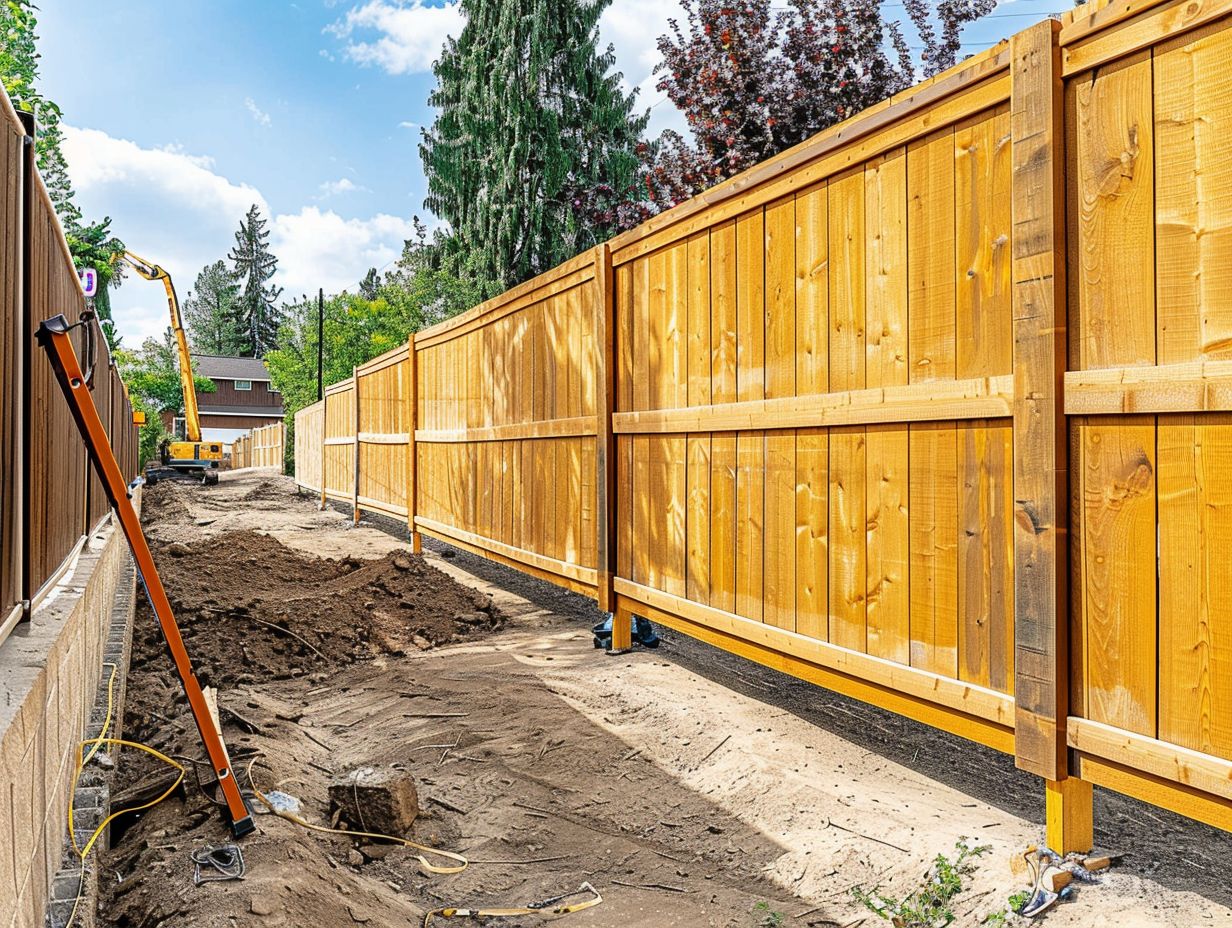
When contemplating the long-term investment of a wood privacy fence, one must be acutely aware of the ongoing maintenance and associated costs. Think of it as a commitment to a relationship—regular upkeep is essential to prolong the fence's lifespan, preventing those pesky repair expenses from creeping up on you like an unexpected bill after a lavish dinner.
A well-maintained fence not only stands the test of time but also continues to enhance the aesthetic appeal of your property, ensuring it remains a charming feature rather than an eyesore.
Factors to Consider
When evaluating the maintenance and long-term costs of wood privacy fences, one must consider several key factors, not the least of which is the frequency of upkeep necessary to combat the relentless forces of nature and ensure ongoing resistance to rot and insects—both of which are critical for preserving the fence's integrity.
Understanding the local climate is of utmost importance, as regions boasting high humidity or frequent rainfall often demand a more rigorous maintenance schedule than their drier counterparts. For example, in a humid climate, the odds of encountering mold and decay increase dramatically, necessitating more frequent inspections, treatments, and potentially the replacement of affected boards—because who wants a fence that’s seen better days?
Opting for high-quality materials is essential in this endeavor. Choices such as cedar or redwood, celebrated for their natural resistance to rot and pests, can significantly mitigate long-term costs associated with replacements and repairs.
Furthermore, one must consider the local pest population, which can vary and significantly influence the frequency and type of maintenance required to safeguard the fence from potential damage. After all, a well-maintained fence is a happy fence!
Cost-saving Tips
To maintain the upkeep costs of your wood privacy fence at a manageable level, it is prudent to adopt a range of cost-saving strategies that can effectively minimize both maintenance and repair expenses. This allows homeowners to skillfully navigate their budget while still relishing the advantages of a durable and aesthetically pleasing fence.
One of the most effective approaches is to conduct regular inspections of the fence for any signs of wear or damage, as this proactive measure can thwart larger issues from developing down the line. Homeowners might also consider applying a protective sealant on an annual basis to ward off moisture and rot, thereby preserving the wood's integrity—because no one wants a fence that resembles Swiss cheese.
Furthermore, investing in a quality warranty can provide peace of mind when it comes to future repairs, covering unexpected damages that may arise over time. By strategically planning for potential upkeep and repair expenses, homeowners can keep their finances stable while continuing to enjoy their splendid fences for years to come—after all, a well-cared-for fence is a happy fence!


